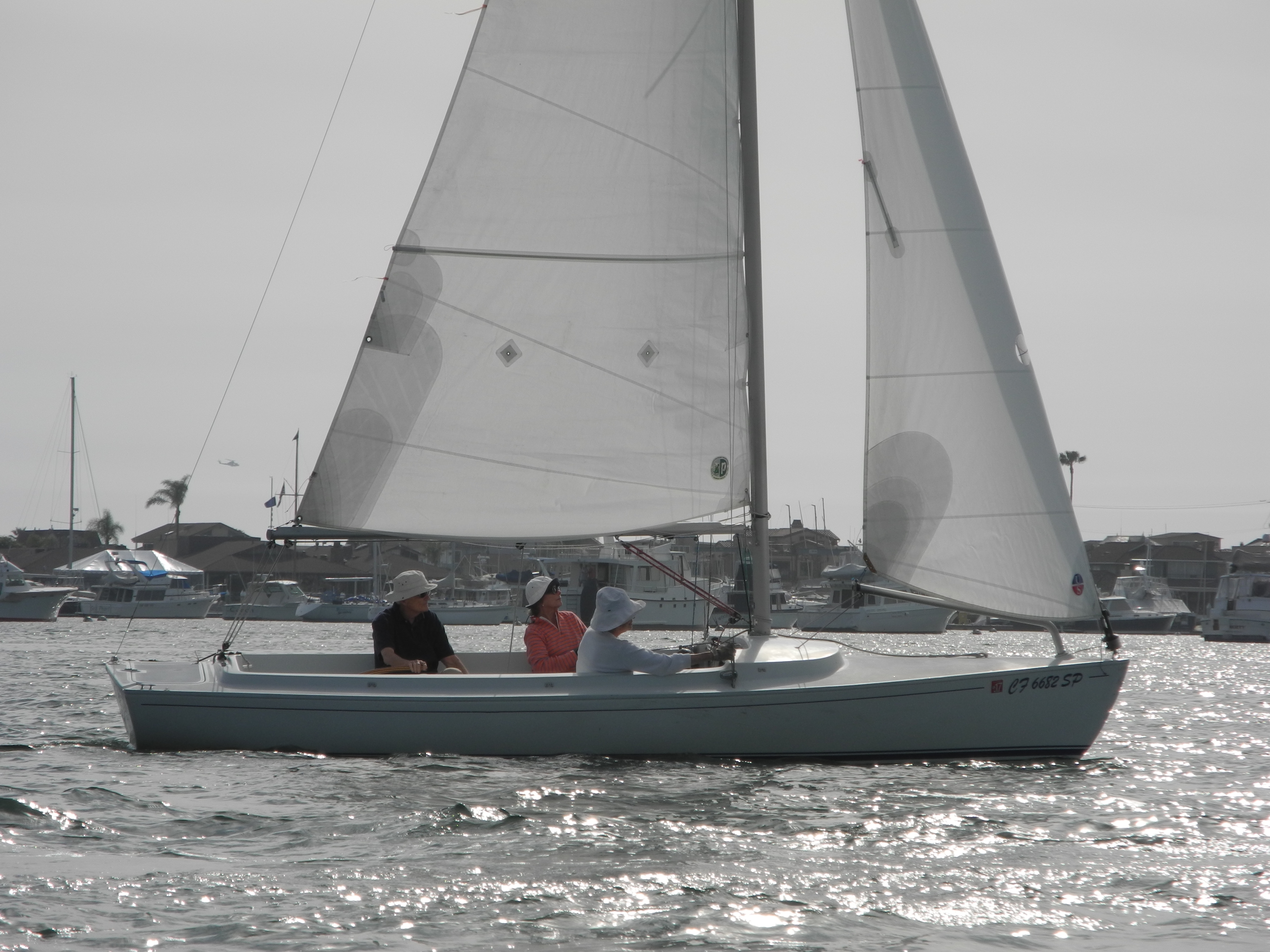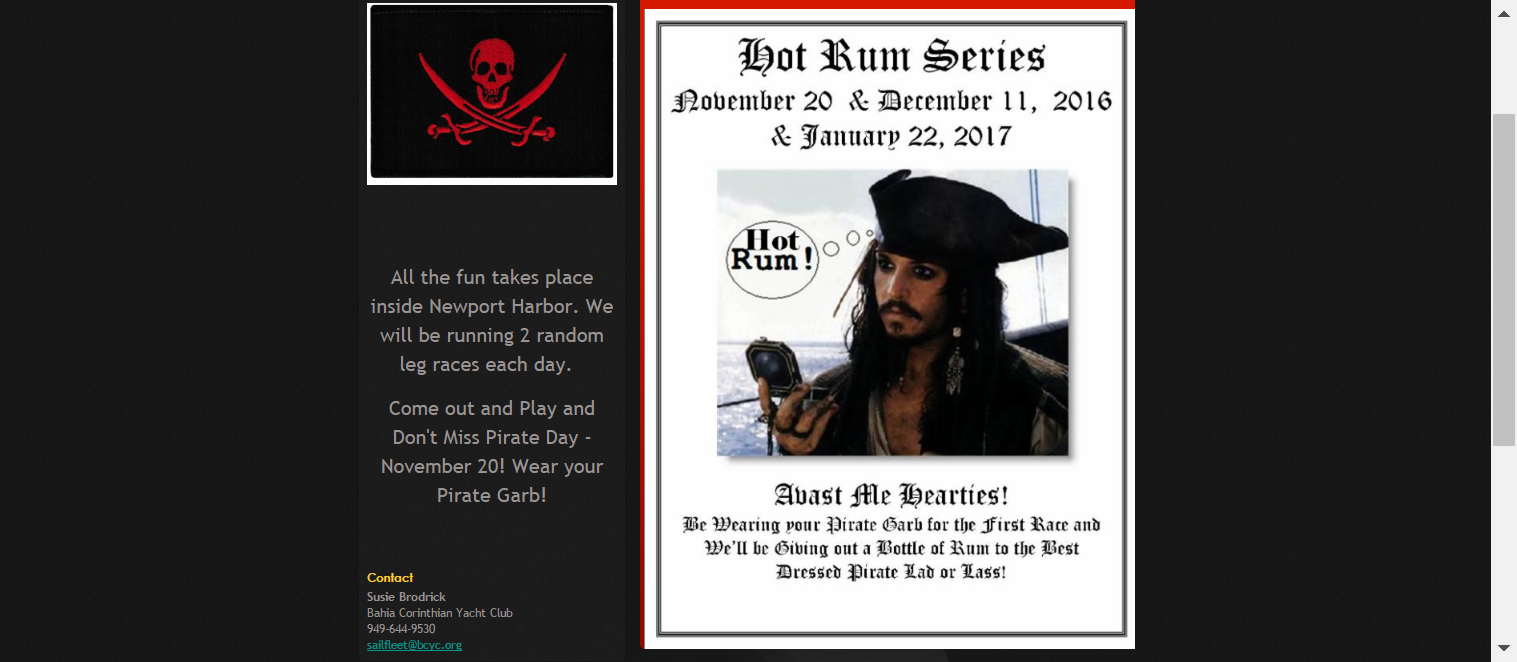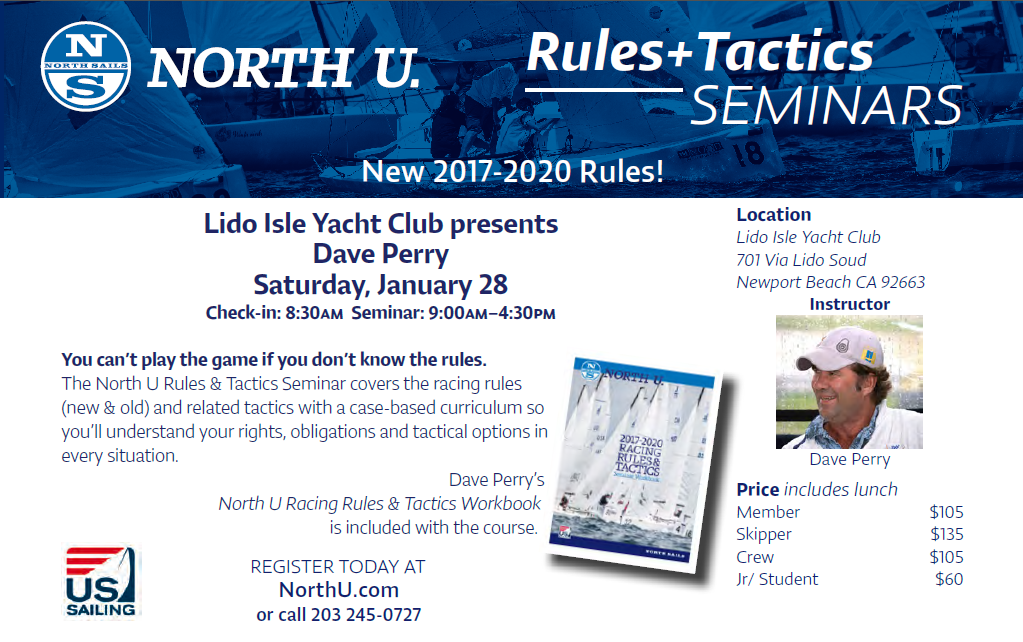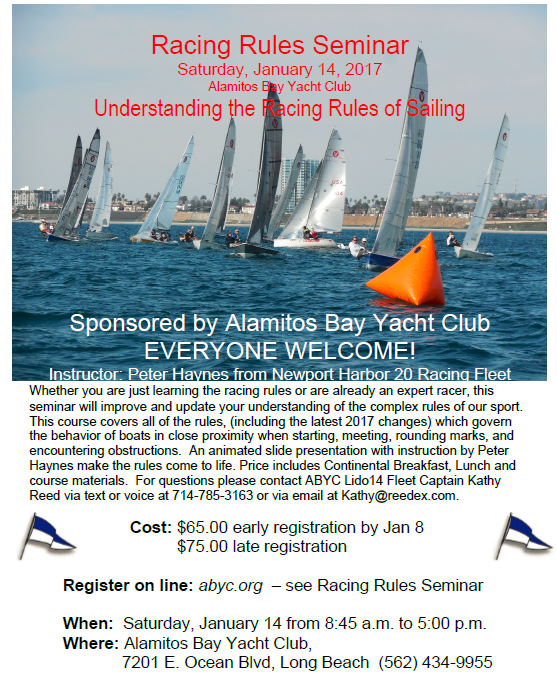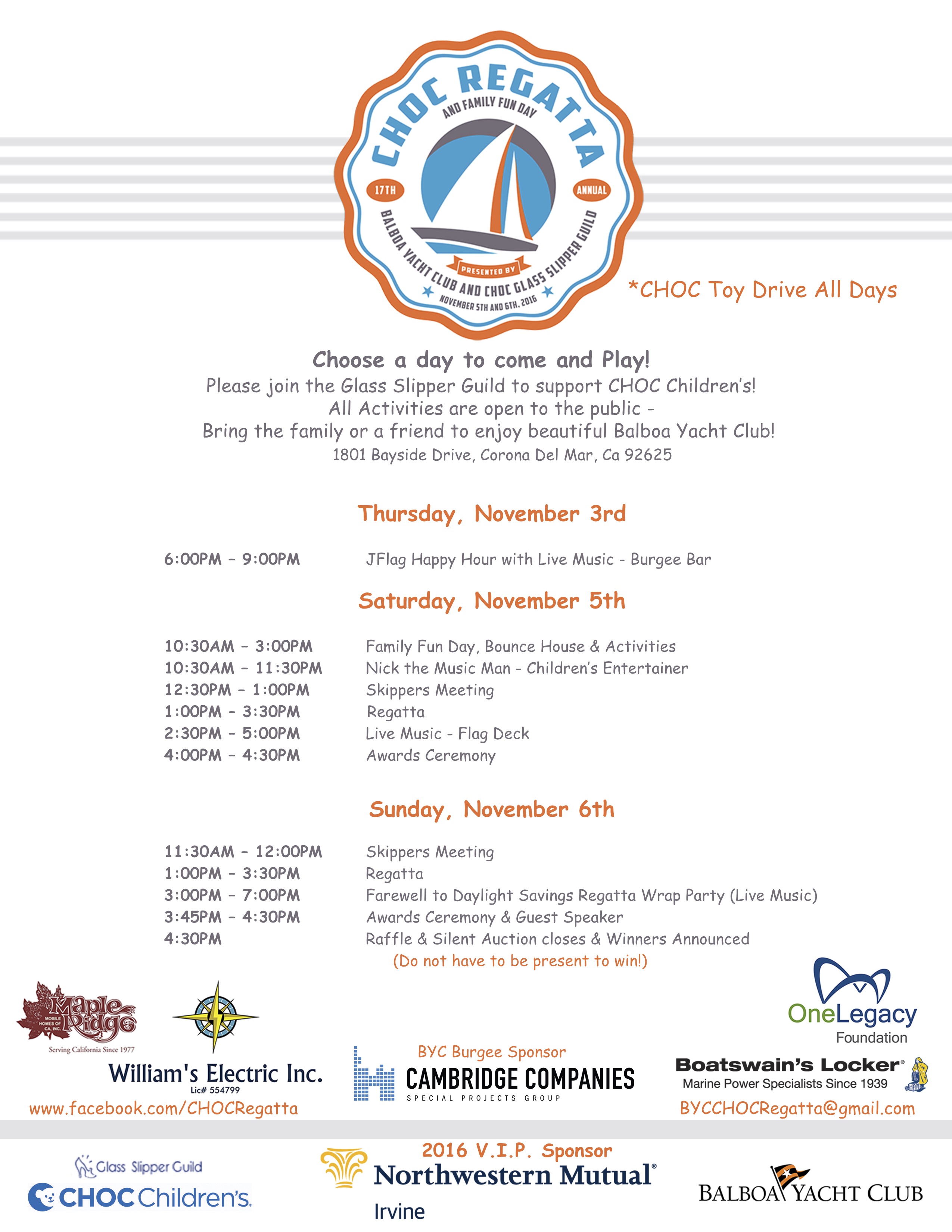Be Rules Smart in 2017!
The Racing Rules of Sailing change every four years in cadence with the Olympics, and the rules for 2017-2020 took effect on January first. Don’t handicap yourself with an incomplete or incorrect knowledge of the rules! A unique opportunity exists this month to really learn the rules. On January 14, I will be presenting my “Understanding the Racing Rules of Sailing Seminar” at Alamitos Bay Yacht Club. And on January 28, Dave Perry will be hosting a North U. Rules and Tactics Seminar at Lido Isle Yacht Club. People have asked if the material which Dave and I will cover will be the same. While the material is the same, my approach to teaching assumes no prior knowledge, builds from one concept to the next, and covers all the DEFINITIONS necessary to understand all the rules for “WHEN BOATS MEET”. So, there is a very good chance that if you attend my presentation two weeks before Dave’s, you will likely understand everything he says. Why not start off 2017 with a better working knowledge of the rules than ever! Skippers, why not send your crews, because two heads are better than one!
